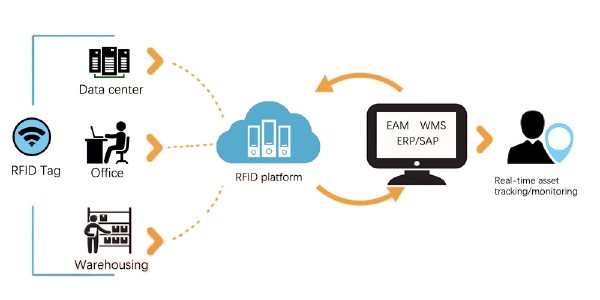RFID Application of University Asset Management System
Published on Monday, Aug 17, 2020
With the continuous improvement of educational level, colleges and universities have more and more fixed assets, such as real estate resources, teaching resources, information resources, facilities and equipment, pipeline and pipe network management and control are particularly important. They are the material basis for completing teaching tasks, and necessary condition for universities’ construction and development. The school’s fixed assets have the characteristics of high equipment value, long service life, loose configuration locations, and difficult management. In order to solve various related problems encountered in the management of fixed assets in colleges and universities, RFID technology is used to carry out asset inventory, depreciation, and automatic statistics of in and out. This saves a lot of manpower and material resources in the asset inventory, greatly improves work efficiency and reduces asset management costs. As a result, it has improved the management level of universities.
The RFID university fixed asset management system solution is mainly to solve the problems encountered by universities in the actual management of fixed assets. The system implements information management around the “in, out, and use” links of fixed assets. In the past, management generally encountered various problems:
- Colleges and universities generally have many branches and departments, making fixed asset management difficult;
- Failure to effectively use and allocate assets, resulting in inefficient use of fixed assets;
- Most colleges and universities re-purchase and neglect maintenance, which increases asset maintenance costs;
- The dynamics of fixed assets can’t be controlled after the asset is purchased;
- The management mechanism is not sound, the responsibilities are unclear, and the management is not in place;
- The management of fixed assets in some universities is still in the stage of financial management and manual management, and asset inventory is difficult.
RFID technology has greatly improved the efficiency of inventory counting, and RFID tag binding of all asset data input information at one time. Generally, Handheld RFID reader is used quickly and easily, and the collected data will automatically determine the addition, allocation, idleness, and scrapping of the asset status. Handheld RFID reader can simultaneously identify and read multiple RFID tags, batch processing, instant completion, and higher efficiency.

Handheld RFID reader can realize “full life cycle management” and “automatic management”. RFID tags can add, modify, and delete data stored in the RFID tag without limitation of the number of times. As long as there is RFID tag reading coverage, it can realize automatic, long-distance accurate and efficient reading and collecting of data. It greatly improves the efficiency in the management of fixed assets. The whole process is fast, simple and convenient, without the intervention of any other factors.
The asset life cycle management platform is mainly realized by hardware including RFID reader and RFID tags, and software system platform. Different fixed asset management projects have different asset management labels. Generally, there are mainly the following:
- Barcode (two-dimensional code) label: This is the main solution currently used. The advantage is low cost, but the disadvantage is that inventory is very time-consuming. For a unit with a very large number of assets, the labor cost is high. At the same time, this method cannot achieve access and control identification. For valuable assets and confidential assets, access control is the core requirement.
- UHF passive RFID tags: The current mainstream adopts this solution. Compared with barcode tags, UHF passive RFID tags can realize long-distance scanning and the cost of tags is also lower. In actual use, due to the influence of the occlusion and the surface material of the asset, the reading distance is often short, and the reading accuracy is less than 100%. It is easily affected by the on-site environment and requires continuous debugging to achieve better results. As the types and performance of RFID tags have been continuously optimized, asset management has also become a major mainstream, with real-time inventory of access and warehouse.
- Active RFID tag: The reading effect of active RFID tag is very good, basically not affected by metal.Active RFID solutions are significantly better than other passive solutions. For the management and location collection of important assets, IT equipment, valuables, mobile and shared resources, active technology has significant advantages.
RFID technology quickly completes the daily management of fixed assets, and comprehensively reflects the real-time dynamics of fixed assets, and the entire life of each fixed asset from subscription, purchase, requisition, borrowing, return, repair, maintenance, cleaning, and retirement. Carry out whole-process tracking management periodically, record the dynamics of fixed assets in real time, and reflect the usage status of each fixed asset. Make the management of fixed assets in colleges and universities more effective and comprehensive, and realize the informatization, standardization and institutionalization of the management of fixed assets in colleges and universities.